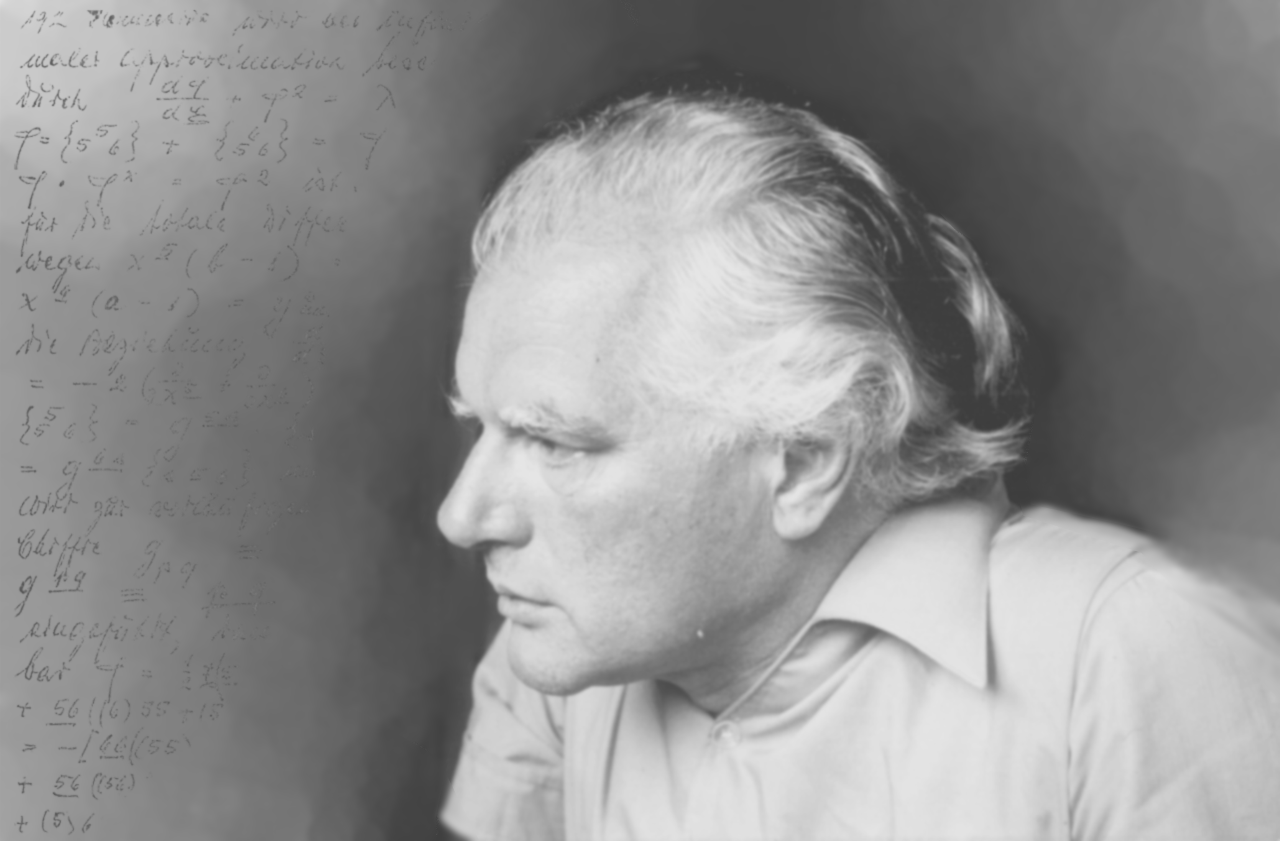Until 2001 a mysterious physicist lived in Germany who in the 1950s had achieved fame for a short time, but then continued working in obscurity. Only rarely did he lecture at congresses, and it was not before the 1980s that he published his work in two comprehensive volumes. The message he wanted to communicate is so difficult to understand that his work has scarcely been read. And yet, the system developed by him seems to mean a greater revolution than Einstein’s, as it directly affects human beings and their personal destinies.
If you ask physicists for their opinion about Burkhard Heim, you will hear judgments such as “misfit, odd loner, dubious dreamer, weirdo”, but also “the new Einstein, Germany’s Stephen Hawking, an ingenious thinker, someone who should be nominated for the Nobel Prize.” So which is true?
The first thing you will note is that the positive opinions have been uttered by those physicists who have known Burkhard Heim personally or have studied his work. By contrast, all critical judgments have come from physicists who have neither known Heim nor examined his work.
In the 1980s Burkhard Heim claimed to have found what Einstein and his successors have been looking for in vain to this day: a mass formula for all elementary particles and the explanation of their qualities by dynamic geometric structures.
That sounds incredible, as nobody thinks a physicist not integrated in the academic life capable of such an achievement. But Heim’s mass formula was already programed and analyzed by physicists at the Deutsche Elektronen-Synchrotron (DESY – German Electron-Synchrotron) in 1981 – with convincing results.
However, since nobody was able to understand the theoretical derivations of the formulas without prior familiarization, the DESY-physicists were stunned, but kept silent about this sensation and awaited the judgments of structural theorists and relativity theorists on the theory. As early as 2004 did the spokeswoman of DESY answer a journalist’s question as follows:
“The few people who have known Heim and some leading scientists have unequivocally come to the opinion that the mass formula is in any case an enormous personal achievement, especially considering his handicap. However, all of them hold the view that it is much too complicated, so that even very good theorists would need to occupy themselves with this theory for at least one year in order to be able to evaluate it.”
This is not about analyzing or defending Heim’s mass formula, but the present text shall give the readers the opportunity to form their own opinion about Burkhard Heim. For that purpose, Heim’s own words will be cited as often as possible. Wherever certain technical terms are used which are only known to physicists, such terms will be commented on, so that the reader will be able to follow Burkhard Heim’s explanations.
A theory that leads to the geometrical description of matter seems very reliable. – Other theories, such as String Theory, Loop-Quantum Gravity or the Standard Modell of particle physics, on the other hand, cannot reveal anything about the geometric structure of elementary particles of matter that has been proven in experiments. Thus, Heim’s system has proven correct – as measured by results. The philosophical consequences for us humans are enormous, as even qualitative aspects of matter, such as learning processes and consciousness, can be described by an aspectual logic newly developed by Heim. Heims occupation with the theory of elementary particles forced him, due to the 2 additional dimensions that had become mathematically necessary and which proved to be of organising kind, to integrate qualities into the total description of worldly events in a formal-logical way. Therefore, he had to develop a more general logic than the Aristotelic one. That is the subject of the present text…
Following the discovery of an additional 700 unpublished pages of manuscripts in Heim’s legacy, this text, which had already been written at that time, was supplemented by a number of citations taken from those manuscripts.
PDF-document for download:
(Free book edition 2021 – ISBN 978-3-9820381-2-4)
